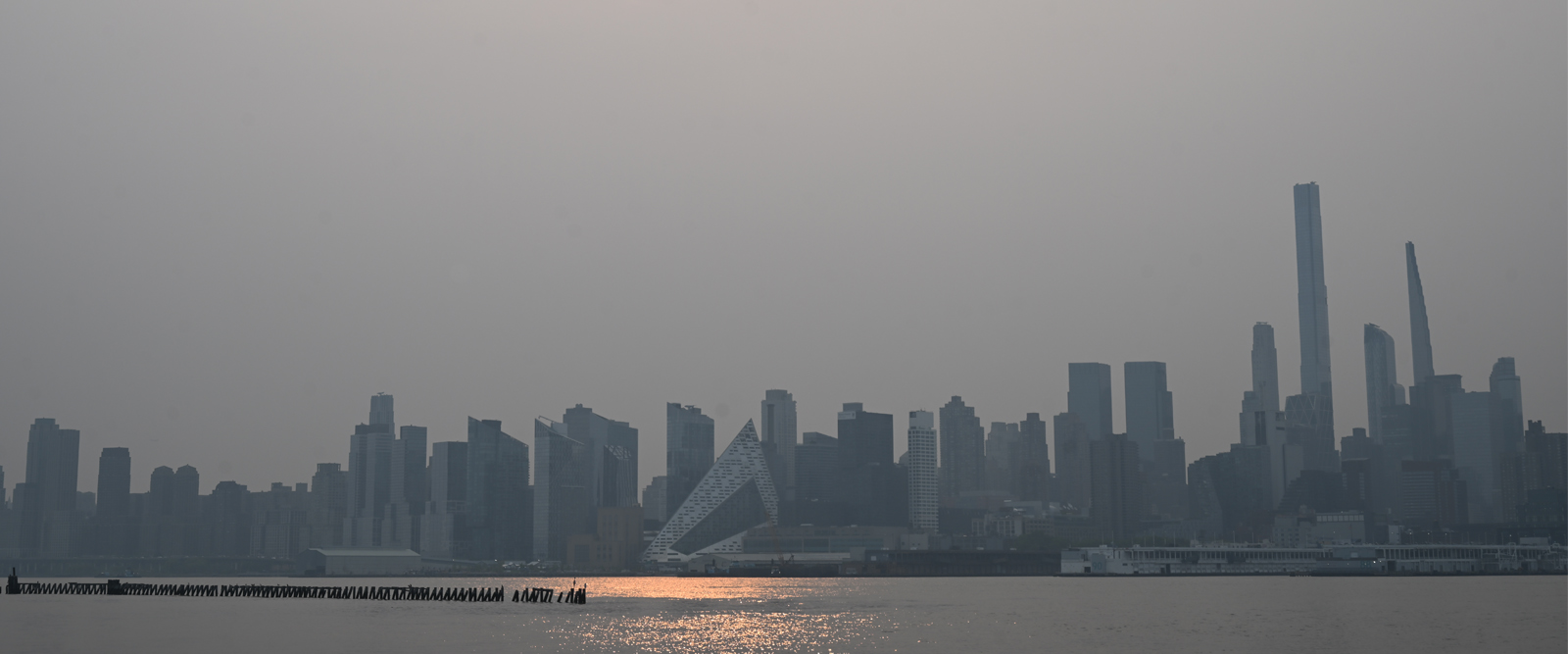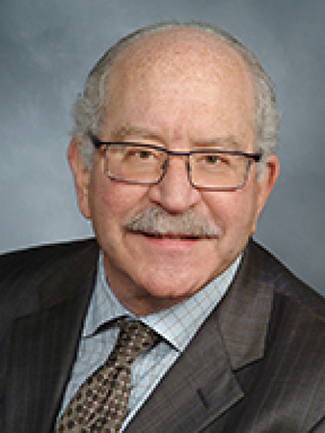How to Stay Safe When Air Quality Is Poor
A pulmonary and critical care medicine expert offers tips on how to protect yourself amid unhealthy air caused by wildfire smoke.


Hundreds of wildfires burning in Eastern Canada have created unhealthy air quality in states from the Midwest to the Northeast, including New York, which became increasingly enveloped in a yellow haze this week.
Officials issued an advisory in New York City, Rockland, and Westchester counties, citing “fine particulate matter” in the air as the main concern. Fine particulate matter is an air pollutant that is produced by fires and can cause short-term health effects.
During this time, “people should stay indoors as much as possible, use air conditioning with filters, and use masks if outdoors,” says Dr. Michael S. Niederman, a physician specializing in pulmonary and critical care medicine at NewYork-Presbyterian/Weill Cornell Medical Center. “People most at risk are those with underlying conditions, the elderly, infants, and very young children.”
Air Quality Indexes span from 0 to 500, and the higher the number, the greater the air pollution and potential health risks. New York City, where the air quality is generally good, according to the city’s Department of Health and Mental Hygiene, is currently in an unhealthy zone, which means that the public may experience health effects.

Dr. Michael S. Niederman
Dr. Niederman, who is also a professor of clinical medicine at Weill Cornell Medicine, spoke with Health Matters about how to protect yourself amid unhealthy air conditions.
How is air quality measured and what is a typical healthy average?
Air quality is a measure of the concentration of particulate matter and gases in the ambient air. Good air quality is typically an Air Quality Index below 50.
When levels rise above an Air Quality Index number of 100, as shown below, people are more likely to develop symptoms. In some places in New York, the number reached 150 to 200, and even higher in some areas.
AirNow, a source for air quality data, states that the six categories include:
- Green (good, 0 to 50): Air is satisfactory, and air pollution poses little or no risk.
- Yellow (moderate, 51 to 100): Acceptable, but there may be a risk for some people, such as those who are sensitive to air pollution.
- Orange (unhealthy for vulnerable groups, 101 to 150): Sensitive groups may experience health effects. The general public is less likely to be affected.
- Red (unhealthy, 151 to 200): Some members of the general public may experience health effects. Members of sensitive groups may experience more serious health effects.
- Purple (very unhealthy, 201 to 300): Health alert: The risk of health effects is increased for everyone.
- Maroon (hazardous, 301 or higher): Health warning of emergency conditions: everyone is more likely to be affected.
What is fine particulate matter, the pollutant of concern?
Fine particulate matter is the product of combustion that can arise from fires, such as the Canadian wildfires, and contains burnt material and sometimes other gases and noxious fumes. Inhaling fine particulate matter is like inhaling cigarette smoke but without the nicotine. The smaller the particle, the more likely it is to reach deep into the lungs and potentially allow some contaminants to enter the bloodstream.
How can the current air quality affect our health, and what are the symptoms?
Inhaling particulate matter from fires can irritate the bronchial tubes in the lungs and cause symptoms, such as chest tightness, cough, wheezing, and shortness of breath. In general, short-term exposures are bothersome, but do not have long-term effects.
Other health effects of exposure are that people may be prone to developing respiratory infections such as bronchitis or even pneumonia if the particulate matter interferes with the lungs’ ability to remove infectious organisms.
Some experts are concerned that there may be long-term effects to the heart and lungs, but we currently do not know if there will be any long-term effects of this current exposure caused by the Canadian wildfires.
What kind of precautions should be taken?
People most at risk are those with underlying conditions, such as heart and lung diseases, the elderly, infants, and very young children. Lung disease patients who are most at risk, for example, are those with asthma, emphysema, and pulmonary fibrosis. They should follow precautions, such as limiting outdoor activities, postponing outdoor events, using air conditioning with filters, and masking.
What can people do to limit exposure inside their homes and cars?
Keep the windows closed and use central air conditioning, if available. There may also be a benefit of filters in individual air conditioning units. In cars, people should keep the windows closed and air conditioning on.
Will masks help protect people from poor air quality?
An N95 or particulate respirators can protect you more than surgical masks, and people should consider wearing them. The efficacy depends on wearing them properly. When commuting, people should determine if they should wear masks by analyzing conditions in buses and subways, such as whether they have air conditioning and if the windows are closed or opened.
When should someone consider going to the doctor?
If someone feels persistent symptoms, they should call their physician. There are several treatments that we can consider giving you, such as bronchodilators (which prevent bronchial spasm and open bronchial tubes, which can relieve chest tightness, wheezing, and cough) and inhaled steroids that relieve bronchial inflammation and are often used for patients with asthma.
How long should people expect air alerts to last, and what should they keep in mind during this time?
At this moment, we want to follow state and city public health announcements and air quality measures, such as through AirNow.
Healthy people have a greater reserve than patients with chronic diseases, but even they may develop symptoms. And if you develop any of these symptoms, take similar precautions, such as limiting outdoor activities, air conditioning, and masking. And call your doctor if symptoms are persistent and bothersome.
Michael S. Niederman, M.D., is dedicated to the care of patients with complex lung diseases, with a particular focus on respiratory tract infections including pneumonia, chronic obstructive pulmonary disease, sepsis, and respiratory failure. He is an expert in the management of patients with pneumonia, has written national and international pneumonia guidelines, and done research on new therapies for pneumonia that can optimize treatment of patients infected with antibiotic-resistant pathogens. Dr. Niederman has published over 350 articles and book chapters related to these efforts and is active in national pulmonary and critical care organizations and journal editorial boards.

